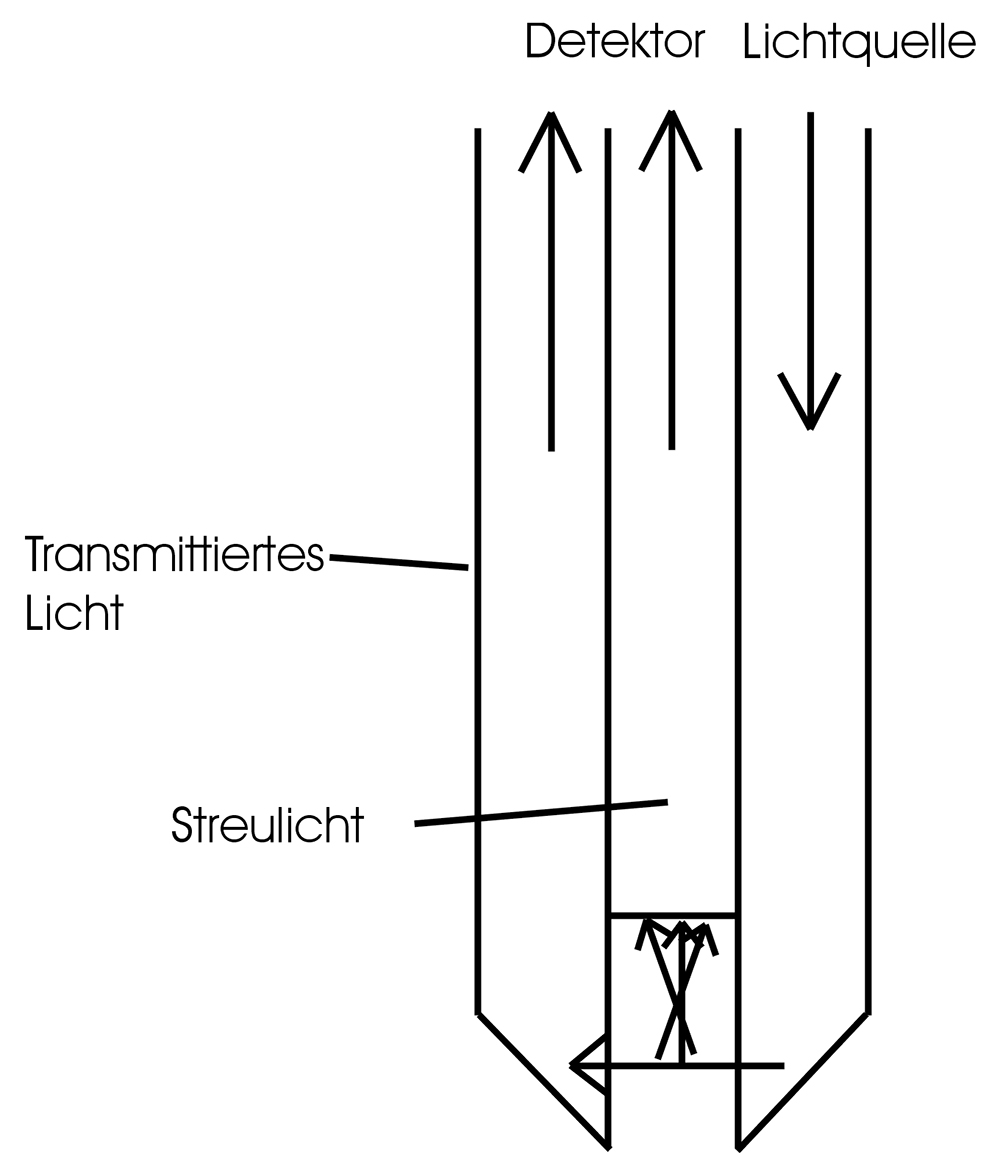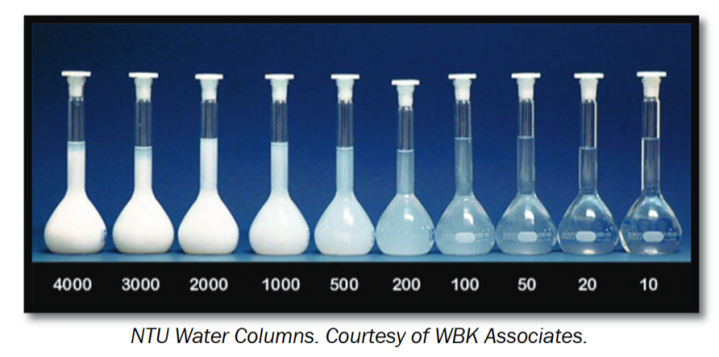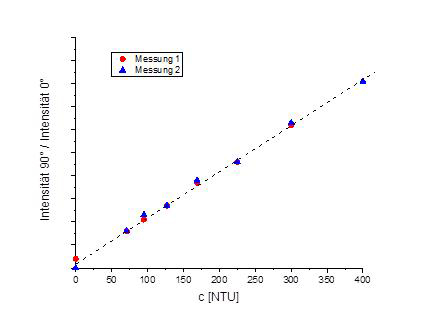Fiber based turbidity sensor for measurements in small volumes



For the turbidity measurement of aqueous solutions in small pipeworks a fiber based turbidity sensor has been realised which is very compact and, therefore, reasonably applicable in pipeworks with diameters less than 1". This allows a turbidity measurement in drinking water pipeworks close to the consumer (mains water supply).
Operating principle
The sensor consists of three optical fibers which are arranged relative to each other in a constant configuration (see figure). The two outer fibers are tapered at an angle of 45° and the central fiber is a little bit retrieved . When the sensor is immerged into a liquid, the light which is coupled into one of the outer fibers, is linearly coupled over (transmission 0°) into the opposite fiber and the scattered light is coupled into the central fiber. The intensity ratio of scattered and transmitted light is a measure for the turbidity of the examined liquid, it delivers a linear relationship with the turbidity. The calibration of the sensor can be done with suitable reference liquids (e.g. Formazine solutions).
Properties and application areas
By the use of standard optical fibers, the measurement setup can be designed very compact and, therefore, small volumes are addressable. A standard LED (e.g. 850 nm) is used as light source and standard Si photodiodes are applied for the detection of transmitted and scattered light. This allows for keeping the cost of the turbidity sensor low. For the use in aqueous solutions plastic fibers can be used, for the use in chemically aggressive media glass fibers are preferred. If the setup is integrated in a small metal tube, the size of the sensing head can be limited to a few mm3. The LED source and the photodetectors can be housed in a slightly bigger unit which is connected to a power supply and a data line. Beside the compact overall size, the fiber based turbidity sensors are characterized by their insensitivity against electromagnetic interference (EMI). They are suitable for the monitoring of drinking or waste water as well as for chemical or biopharmaceutical processes and for food or beverage production.
Our research & development services
We develop the fiber based turbidity sensors adapted to your application and operational area, taking into account media and geometries. Beside the sensors for the turbidity measurement we also address other application fields for online monitoring in liquids by fiber based sensors, e.g. refractive index or liquid level measurement.
 Fraunhofer Institute for Microengineering and Microsystems IMM
Fraunhofer Institute for Microengineering and Microsystems IMM